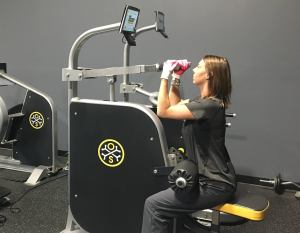Pianos add a touch of class to any home and can be a great way to express yourself or relieve stress. But they are delicate instruments that require a special storage environment. Look for a facility that offers climate control to ensure the wood does not crack and the strings do not become untuned. Click the Piano Storage Denver to learn more.
For many people, their piano is an expensive investment. Whether they’re renovating, moving, or simply redecorating, they want to make sure that their investment is well protected. This is why it’s important to find a storage facility that offers climate control. Pianos are sensitive to changes in humidity and temperature. In fact, a single change can have devastating effects on the instrument. If you don’t properly protect your piano when it is being moved or stored, you could end up paying for costly repairs down the road.

Ideally, the climate control system used in a piano storage facility will be able to maintain a consistent temperature and humidity throughout the year. This will help to ensure that your piano is in a state of peak performance when you need it. You can also use a hygrometer to monitor your piano’s condition at home. This will allow you to keep a close eye on things like humidity levels, which should stay around 42-43% throughout the year, and to avoid major fluctuations that can damage your piano.
Pianos are complex assemblies of wood, metal, and felt, all working together to produce the beautiful melodies we love to hear. Unfortunately, this delicate balance can be disrupted by temperature and humidity changes, which can lead to irreparable damage. Fortunately, piano storage facilities are equipped to prevent this by using sophisticated climate control systems that can manage humidity and temperature levels on a constant basis.
This can help to avoid problems like loose tuning pins, which are caused by contraction in the wooden pinblock. It can also help to prevent damage to the strings and soundboard, which is caused by high humidity. Lastly, it can help to prevent the development of cracks in the body of the piano.
The ideal environment for a piano is one that has a stable relative humidity of around 45%, which is typically achieved by using humidifiers during the dry winter months and dehumidifiers during the wet summer months. Investing in these devices will help to ensure that your piano is kept in a museum-like condition at all times.
Humidity Control
The piano is a delicate instrument that requires specialized care, particularly during storage. Wood components are sensitive to temperature and humidity fluctuations, and these shifts can cause harm to the piano’s structure, sound quality, and appearance.
The ideal storage conditions for a piano are between 40% and 50% humidity, which can minimize damage to the soundboard, glue joints, or veneer. Humidity changes can also affect the tuning pins, which could lead to loosening of the strings and deterioration of the action mechanism.
Climate-controlled storage containers protect the piano from extreme environmental fluctuations by maintaining consistent temperature and humidity levels throughout the year. These specialized units have sealed seams, robust insulation, and built-in dehumidification systems. Some even have digital hygrometers that can track the humidity levels precisely, making them the optimal choice for preserving your piano.
Humidity control is a crucial feature of any piano storage facility, and it’s important to choose one that prioritizes this aspect of preservation. Some facilities simply use air conditioning to keep the temperature at a comfortable level, but this is not enough to ensure proper preservation. Look for a storage facility that uses a system such as the Piano Life Saver to regulate the moisture levels of the piano.
The Piano Life Saver System is an innovative and effective way to protect your piano from the harmful effects of humidity fluctuations. It consists of a humidifier and a dehumidifier, each equipped with a sensor that detects moisture changes in the atmosphere. When the sensor detects too much moisture, it activates the dehumidifier to remove excess water vapor from the air. This keeps the piano within the ideal moisture range, preventing damage from excessive moisture and prolonging the lifespan of the piano.
Aside from protecting the piano against humidity changes, the Piano Life Saver System can also protect it against pest infestations. Pests such as rodents and insects can wreak havoc on the piano’s internal components, resulting in costly repairs or even irreparable damage. The Piano Life Saver System eliminates the threat of these destructive intruders by creating a sealed, controlled environment that is impenetrable to all but the most persistent intruders.
Security
Whether it’s an investment for the children’s weekly lessons or a family heirloom, a piano is a complex and delicate instrument. Moving and storing it is an intricate dance, and proper precautions must be taken to ensure the integrity of this beloved possession. When choosing storage, look for a facility with essential security features to keep your piano safe from theft and damage. Inquire about climate control and access options to guarantee your piano’s well-being while in storage.
Climate-controlled facilities offer the best environment for pianos, as they prevent temperature and humidity changes from affecting the wood. Wood expands and contracts in response to extreme temperatures, which can damage the internal components of your piano. This is why you should never store a piano in an uninsulated garage, basement, or backyard storage shed.
While it may seem like an inconvenience to transport and store a piano, these extra steps will protect the instrument from damage and ensure its long-term health. It’s also a good idea to use a piano cover, which will help to keep dust and other debris away from the keyboard and wooden surface.
If you choose a climate-controlled facility, be sure to ask about the facility’s access policies and schedule. Some facilities offer 24/7 access, while others have restricted hours. Ask about the availability of dollies or other equipment that can make it easier to move your piano from the truck to the storage unit.
Finally, it’s important to ensure that your piano is stored on a sturdy platform and elevated from the floor of the storage unit. This will prevent water damage from spills or floods, and it will also keep the piano from being damaged by heat fluctuations or sudden cold snaps.
There are a number of reasons why people need to place their pianos into storage. Perhaps they have downsized from a larger home, or maybe the children have lost interest and the piano is no longer being played. Whatever the reason, it’s important to find the right piano storage solution so that your piano can be safely kept for as long as you need it.
Insurance
Pianos are among the most expensive items that people own, and they often have their own unique insurance requirements. If your piano is currently insured, whether as part of your home or contents insurance policy or a separate musical instrument insurance policy, it may be possible to extend the coverage to cover the piano’s transport and storage needs. However, you’ll need to ensure that you choose the right type of insurance for your specific piano and that the policy’s deductibles and premium costs are affordable given its value.
When storing a piano, it’s important to find a facility that prioritises security and offers 24/7 access to allow you to check in on the instrument whenever needed. A good option is an indoor piano storage unit that uses HVAC to regulate temperature and has dehumidifiers to help control moisture. Some facilities even use desiccants, which are larger versions of the moisture-drawing containers you might find in medications or closets to keep clothes from smelling musty.
Because pianos are so delicate and intricate, it’s essential to make sure that they’re protected during the relocation process. A reliable moving company will offer several different insurance options to meet the needs of their clients, such as transit and full-value protection. While basic coverage typically includes a set amount per pound of the piano’s weight, full-value protection will reimburse you for the replacement or repair cost of your cherished instrument.
As the leading movers Westchester, we know the importance of protecting your prized possessions during the relocation process. It’s why we’re dedicated to offering comprehensive coverage that’s designed to protect your piano from the unpredictable risks of the moving process.
For instance, a shaky move can cause damage to the inner workings of your piano or even crack its keys. Similarly, environmental factors such as extreme temperatures and humidity changes can cause irreparable harm. Our piano move insurance provides peace of mind knowing that your instrument is fully covered for any damages that may occur during the relocation process. It’s an additional layer of protection that complements our commitment to providing exceptional service.








